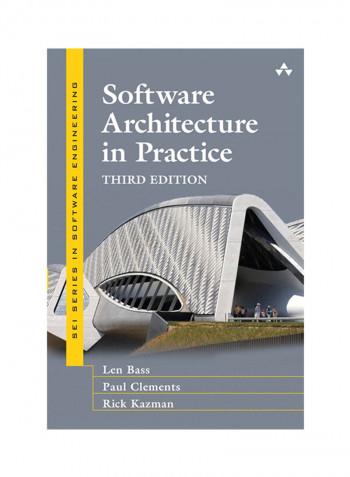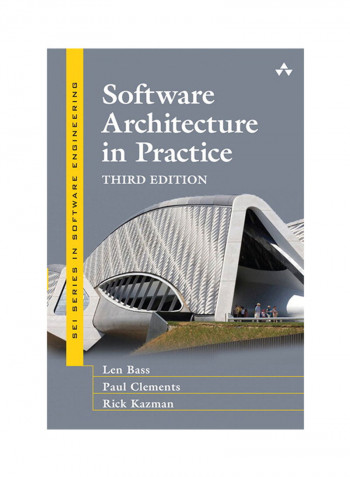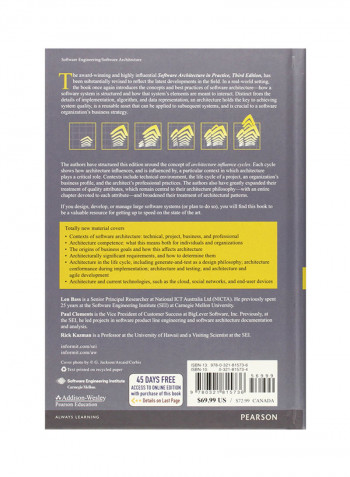Software Architecture In Practice Hardcover
Recommend
Sort by
Rating
Date
Specifications
Author 1
Len Bass
Book Description
The award-winning and highly influential Software Architecture in Practice, Third Edition, has been substantially revised to reflect the latest developments in the field. In a real-world setting, the book once again introduces the concepts and best practices of software architecture-how a software system is structured and how that system's elements are meant to interact. Distinct from the details of implementation, algorithm, and data representation, an architecture holds the key to achieving system quality, is a reusable asset that can be applied to subsequent systems, and is crucial to a software organization's business strategy. The authors have structured this edition around the concept of architecture influence cycles. Each cycle shows how architecture influences, and is influenced by, a particular context in which architecture plays a critical role. Contexts include technical environment, the life cycle of a project, an organization's business profile, and the architect's professional practices. The authors also have greatly expanded their treatment of quality attributes, which remain central to their architecture philosophy-with an entire chapter devoted to each attribute-and broadened their treatment of architectural patterns. If you design, develop, or manage large software systems (or plan to do so), you will find this book to be a valuable resource for getting up to speed on the state of the art.
ISBN-10
321815734
ISBN-13
9.78032E+12
Language
English
Publisher
Pearson Education (US)
Publication Date
21-Nov-12
Number of Pages
624
About the Author
Len Bass is a Senior Principal Researcher at National ICT Australia Ltd (NICTA). He joined NICTA in 2011 after twenty-five years at the Software Engineering Institute (SEI) at Carnegie Mellon University. He is the coauthor of two award-winning books in software architecture, including Documenting Software Architectures: Views and Beyond, Second Edition (Addison-Wesley, 2011), as well as several other books and numerous papers in computer science and software engineering on a wide range of topics. Len has almost fifty years' experience in software development and research in multiple domains, such as scientific analysis systems, embedded systems, and information systems. Paul Clements is the Vice President of Customer Success at BigLever Software, Inc., where he works to spread the adoption of systems and software product line engineering. Prior to this position, he was Senior Member of the Technical Staff at the SEI, where, for 17 years, he lead or co-lead projects in software product line engineering and software architecture documentation and analysis. Other books Paul has coauthored include Documenting Software Architectures: Views and Beyond, Second Edition (Addison-Wesley, 2011) and Evaluating Software Architectures: Methods and Case Studies, (Addison-Wesley, 2002), and Software Product Lines: Practices and Patterns (Addison-Wesley, 2002). In addition, he has also published dozens of papers in software engineering reflecting his long-standing interest in the design and specification of challenging software systems. Paul was a founding member of the IFIP WG2.10 Working Group on Software Architecture. Rick Kazman is a professor at the University of Hawaii and a Visiting Scientist (and former Senior Member of the Technical Staff) at the SEI. He is a coauthor of Evaluating Software Architectures: Methods and Case Studies, (Addison-Wesley, 2002). Rick's primary research interests are software architecture, design and analysis tools, software visualization, and software engineering economics. He is also interested in human-computer interaction and information retrieval. Rick was one of the creators of several highly influential methods and tools for architecture analysis, including the SAAM (Software Architecture Analysis Method), the ATAM (Architecture Tradeoff Analysis Method), the CBAM (Cost-Benefit Analysis Method), and the Dali architecture reverse engineering tool.
Author 2
Paul Clements
Author 3
Rick Kazman




